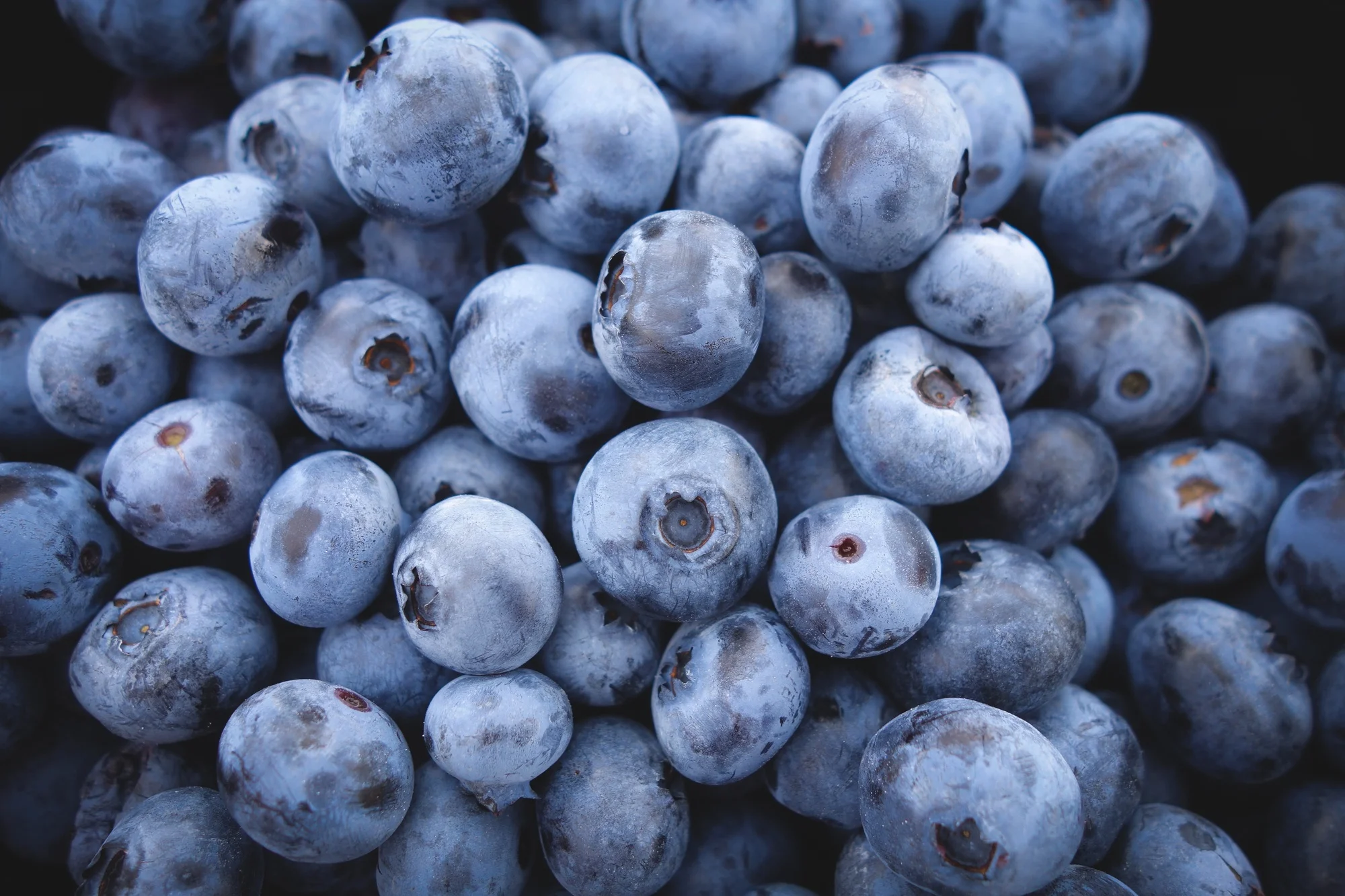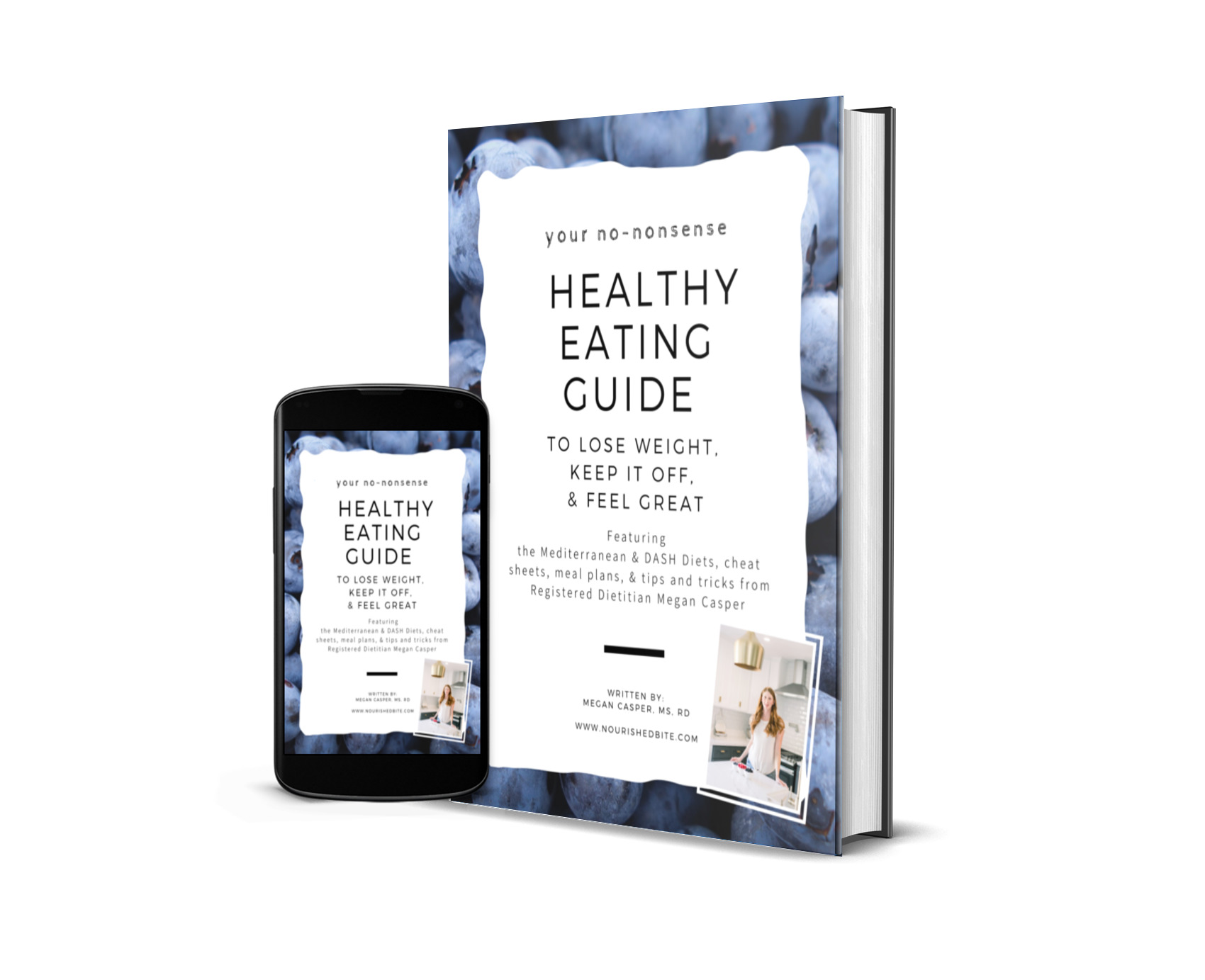What are the Healthiest Foods for Kids? Here are important nutrients for your growing child.
/You know your kid should be eating a “balanced diet” but when your child is begging for peanut butter and jelly or mac and cheese for the umpteeth day in a row, it’s hard to feel like you’re doing the best you can.
Instead of trying to get them to eat everything, here’s a list of important nutrients your kids need so you can hone in on what vitamins and minerals your child may be missing. Also, I’ve added a few kid-friendly ideas for each nutrient to get you started.
It can be hard to figure out a balanced diet for kids. Picky eating in children is so common. If you’ve been worried your kids aren’t eating a healthy diet, it may be a relief to see that many of the foods kids love are filled with great nutrients to help them grow and develop! And if this list confirms your suspicions that their diet is lacking, try adding in some of the suggestions below!
MACRONUTRIENTS:
Protein: Worried your child isn’t getting enough protein? Protein is needed for muscles and other tissues to grow, plus it helps the immune system. If your picky eater doesn’t like meat, have no fear. There are plenty of other ways to get protein in the diet. It’s recommended that 2-8 year olds get 3-5 ounces per day, or 5-8 ounces for kids 10-14 years old.
Kid-friendly foods high in protein:
Chicken, turkey, fish and other lean meats
Snack on some nuts or smear on some peanut butter
Dairy products like milk, yogurt, and string cheese
Eggs
Beans like edamame or hummus (or whatever other beans your kid likes!)
Healthy fats: It’s easy peasy to get fat in the diet, but getting it from healthy sources is something that both kids and adults alike can struggle with. Fat is good for brain and nerve growth, especially in the younger years. It also helps the body absorb vitamins and is necessary for lots of other things like blood clotting and the metabolism. It’s recommended that kids get about 30% of their calories from fat.
Kid-friendly foods high in healthy fats:
Swap in healthy vegetable cooking oils like olive, avocado, safflower, corn or soy oils.
Keep proteins lean and aim to get kids eating fish high in healthy oils, like salmon or cod (Here’s a recipe for baked cod like fish sticks.)
Let kids snack on mixed nuts
Fiber: If your kids aren’t big fans of eating fruits, vegetables, or whole grains, this one can be tricky. Fiber has so many health benefits, like helping maintain a healthy weight, lowering blood cholesterol, and don’t forget an easier time in the bathroom. It may protect against the development of type 2 diabetes and some cancers. While your kids don’t have to worry about some of these problems quite yet, setting them up with healthy eating habits now will give them a healthier life in the future.
Kid-friendly ways to increase fiber:
Serve more fruits and vegetables. I like to offer one at every meal, and sometimes leave something like an orange or apple on the table where it’s easy to grab
Avoid peeling produce. Much of the fiber, as well as antioxidants, are in the skin. Get a good vegetable brush to give them a scrub.
Try new ways to serve fruits and vegetables. Some kids prefer them crunchy so experiment with offering them raw or slightly cooked. Conversely, some also like them mushy so give both a go.
Switch to whole grains, pastas, and breads.
Add more beans into dishes, or offer hummus as a snack.
Offer snacks high in fiber like fruits, nuts, popcorn and veggie sticks.
MINERALS
Calcium: We all know that calcium is essential for strong bones, but did you also know that is needed for healthy muscles and nerves too? The strength of our bones is mostly established through childhood, (exercise in adults helps maintain and sometimes strengthen bones) so it’s essential that kids get calcium while they’re growing. Usually, milk and milk products are the go to when you think of calcium, but calcium can also be found in edamame, vegetables (broccoli, kale, collards and other leafy greens), almonds, sesame seeds, beans (white beans, red beans, chickpeas), and fruit (oranges, figs and prunes.)It’s recommended that kids 1 to 8 years old get 2–3 servings (700 -1000 mg) of a high calcium food a day, and kids 9 to 18 years old get 4 servings. (1300 mg). Kids and teens 9 to 18 years old need 1,300 mg of calcium a day (4 servings).
Kid-friendly foods high in calcium:
Yogurt parfait with fruit and whole grain cereal
Smoothies with low-fat milk or soy milk
Kid Classic: A simple glass of milk, perhaps with a drop of chocolate flavoring
Mix up some hummus and serve with whole grain crackers or veggie sticks
Sprinkle sesame seeds on vegetables and dishes
Swap in almond butter instead of peanut butter
Serve edamame as a snack or side
Iron: Iron is needed for red blood cells to carry oxygen through your body, plus it helps kids grow and is needed for the immune system. Kids that don’t get enough iron can develop anemia, weakness, slowed growth, and developmental delays.
Animal sources of iron are better absorbed, but adding vitamin C into a meal helps absorption of the type of iron (non-heme) found in fruits and vegetables. (Check out below for some vitamin C ideas!) Most kids do not need an iron supplement, so check with your doctor before starting one.
Toddlers are at risk as they start to wean from breastfeeding or fortified formula. Drinking too much milk can also lead to deficiencies since it is low in iron and replaces other food they may have otherwise eaten.
Kid-friendly foods high in iron:
Lean meats
Fortified cereals, breads and pasta. Try a fortified cereal with strawberries on top, or whole wheat pasta with tomato sauce and turkey meatballs
Beans. Try them on the side, mixed into chili, or - our fav in this house - mixed into hummus with some iron-boosting lemon juice
Green leafy veggies: if your kid isn’t into salads, try mixing them into eggs, into smoothies, or chopped up into mac and cheese
Dried fruit - raisins, and other dried fruit is a great source of iron, but beware that they can stick to chompers and raise the risk of cavities
Nuts and seeds. Give the kids a handful of nuts (just make sure they’re old enough for them not to be a choking hazard!) with a vitamin C boosting clementine as a snack, or know that it’s alright they’re having yet another PBJ since peanuts are also a good source of iron. (Bonus points for using fortified bread.)
Magnesium: Magnesium plays hundreds of critical roles in the body, from making muscles contract, to strengthening bones to even making DNA. It’s needed for nerve conduction, the immune system, energy production, and so much more. Low magnesium levels can lead to weakness, heart disease, fatigue, depression, and more.
Kid-friendly foods high in magnesium:
Yay for nuts! Cashews, almonds, and brazil nuts are especially high in magnesium. Pumpkin and chia seeds are also high in magnesium, so see if kids want to experiment sprinkling these on their yogurt and other dishes. Smear a banana, which is also a good source of magnesium, with some almond butter for a healthy snack
Milk and dairy products are a common source of magnesium for kids, so let them enjoy low-fat yogurts or a glass of milk. Soy milk also is a good source of magnesium
Guacamole anyone? Let kids help mash their own treat to get them involved
Dark chocolate - try giving your kids a slightly darker chocolate since this treat is high in magnesium
Swap in whole grain breads, pastas, and cereals for a magnesium boost
Leafy greens - however your kids like ‘em!
Potassium: Potassium is one of the most important minerals in the body since it helps regulate fluids and blood pressure. It’s also a vital nutrient for kids since it helps build strong bones. Luckily potassium can be found in many foods.
Kid-friendly foods high in potassium:
A glass of milk
Sweet potato or potato
Fruits like cantaloupe, watermelon, bananas and oranges
Vegetables like broccoli, spinach and other leafy greens, cucumbers, peas, and zucchini
Lean meats and seafood
Whole grain breads, pastas, and cereals
Zinc: Zinc is an important nutrient for growth and development, plus it’s key for the immune system. Kids with a zinc deficiency can have slow growth, increased colds and infections, learning disabilities and difficulty concentrating. While it’s estimated that only about 6% of girls and 10% of boys are low in zinc, up to 30% of small children are deficient.
Luckily zinc is easy to get in food, and kids quickly can gain back any lost height or weight once they begin to eat an improved diet.
Kid-friendly foods high in zinc:
Once again, lean meats are up there, especially red meat and pork
Shellfish is high in zinc, so grab a little cocktail sauce and shrimp if your kids aren’t allergic
Beans have a decent amount of zinc, but it’s locked by phytates. Cooking helps make zinc more available, so try adding some baked beans to your kids tacos
Nuts and seeds, like pumpkin seeds, sesame seeds, almonds, and peanuts have zinc. PBJ sandwiches win again, with almond or peanut butter, or sprinkle seeds on whatever they’ll think is fun - yogurt, eggs, you name it, let them get creative!
Dairy has a good amount of easily available zinc, so your kids are getting a good amount when they have milk, yogurt, and cheese
Zinc is also found in whole grains, various vegetables, and eggs, so it’s easy to get it throughout the day in small amounts
VITAMINS:
Vitamin A: Vitamin A is essential for growth, healthy eyes and skin, and the immune system. Luckily for all of those very important things, there are plenty of kid friendly foods filled with this nutrient, including fruits and vegetables high in beta-carotene, an antioxidant that is converted to vitamin A by our bods.
Kid-friendly foods high in vitamin A:
Veggies like carrots, sweet potatoes, broccoli, peas, red and yellow bell peppers, dark leafy greens and lettuce
Snack on fruits like apricots and cantaloupes
Eggs (specifically the yolks)
B12: Vitamin B12 is important for so many important things in our bodies. From forming DNA, to growing and maintaining healthy blood vessels and nerves, it’s vital for kids, and adults too, to have B12 in their diet.For meat-eaters, B12 is easy to get since it’s found in meat, dairy and egg products. B12 deficiencies are common in vegetarian and vegan diets, which is why it’s essential to eat foods fortified with B12. If your child feels weak, tired, has redness in their mouth, weight loss, or a loss of appetite, and they’ve been eating foods high in B12, check with your doctor as it’s possible they may not be able to absorb it.
Kid-friendly foods high in vitamin B12:
Meat, dairy, and eggs.
Vegan-friendly foods high in B12:
fortified non-dairy milk
meat substitutes
breakfast cereals
nutritional yeast
vegan spreads
Vitamin C: Everyone knows vitamin C is needed for a healthy immune system, but did you know that it’s also necessary to mend all the bumps and scrapes that are so common in childhood? Vitamin C is also key to help the absorption of iron. While there are many kid friendly foods out there high in vitamin C, this can also be a common nutrient deficiency in kids. Check out this list and try to get your kids a serving or two every day.
Kid-friendly foods high in vitamin C:
Fruits like kiwi, oranges, clementines, grapefruit, strawberries, cantaloupe. Try adding slices of strawberries to PBJ instead of jelly!
Vegetables like broccoli, tomatoes, bell peppers, and sweet potatoes
Vitamin D: Vitamin D has many roles in the body. You’ve probably heard you need it for strong healthy bones, and you've heard right. Vitamin D helps bring calcium into your bones and teeth and helps regulate calcium levels in your blood. It also supports the immune system, regulates insulin levels, and supports cardiovascular health.
It’s recommended kids get 600 IUs per day. Very few foods are naturally high in vitamin D. Most of the vitamin D in the American diet comes from fortified foods, such as milk, cereal, and orange juice. You also get vitamin D from the sun, but be careful not to let them get TOO much sun since it ups their risk for skin cancer. (For more information on this check out my post all about vitamin D here.) Signs of a deficiency include tiredness, depression, more frequent colds, weakness, and bone aches.
Kid-friendly foods high in vitamin D:
Look for fortified foods like milk, cereal, and small servings of 100% orange juice
If your kid is down, fatty fish like salmon and tuna is a good source
Small amounts are found in cheese and egg yolks
Takeaway tips to get kids eating well:
Research has shown that kids that eat a high sugar diet are much more likely to have deficiencies. Reading labels, and finding ways to cut back on sugary foods could be a way to have more highly nutritious foods in the house. (Click here to find out more about reading nutrition labels.)
Focus on the things they can eat, not what they can’t.
Model good food choices for your kids. You can do this in so many ways! First, don’t talk about your weight or body image issues in front of your kids. They’re always listening and kids are thinking they need to diet at younger and younger ages. Second, eat all the wonderful foods they should be eating yourself! There’s no way your kid is going to suddenly pick up a salad if you don't do it yourself, right? Going food shopping together, gardening, and offering all the same foods that you are eating to your kids are other great ways to teach them how to eat a healthy diet.
Don’t despair if it doesn’t click right away. It can take over 14 exposures or more for a kid to accept a food. Exposures can mean trying it, seeing it, or even playing with it. Don’t give up hope - keep putting it out there!
Keep it light. Try not to harp on “bad” foods, but instead you could talk about the good things In them and how they keep their bodies strong to do their favorite activities.





